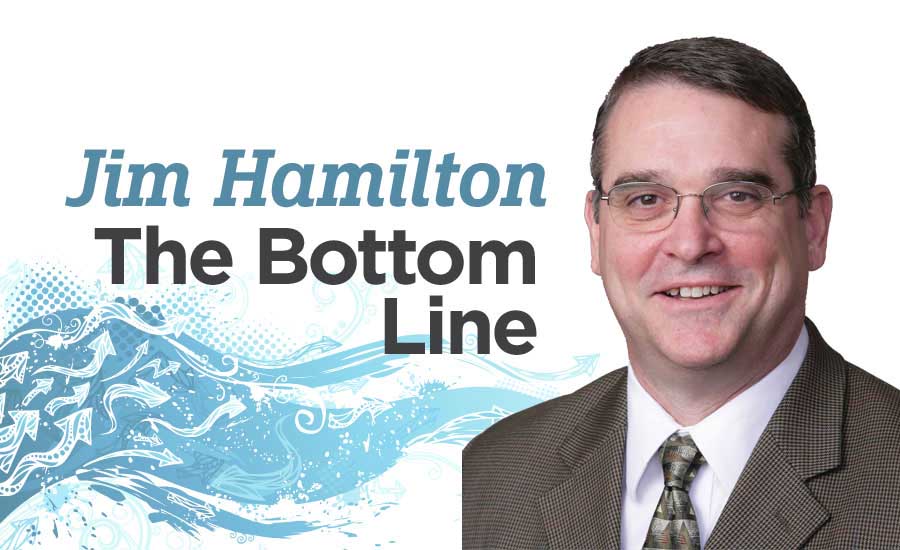So, what is continuous improvement? William Edward Deming is considered by many to be the godfather of continuous improvement. I had the opportunity to attend a Deming Lecture at a local community college in 1990, about six months after I met my business mentor Frank Blau. Both men are icons in my life, along with my father, Big Ray. Big Ray taught me the trade, Frank Blau taught me how to become a businessman, and Edward Deming taught me about the processes of improving my business
Though implementing new processes into your business can often be a simple task, implementing changes to existing processes is a different beast altogether, especially if you don’t have the right culture in place.
Home service businesses generally start out as mom and pop organizations, and the processes in place at these mom and pop organizations are generally less complex than larger businesses. This is because both mom and pop both wake up and go to work knowing what their roles are.
Now introduce a new employee into the business, one who does not have 24-hour access to mom and pop, making it harder to communicate their thoughts about how the business should be run. I’ve found that this lack of communication is generally not the new employee’s fault. In most cases, the owners aren’t skilled at communicating exactly what they want the employee to do.
The good news is that mom and pop shops have the ability to turn on a dime when it comes to improving their businesses, assuming they’re able to communicate to their employees in an effective way. The lesson here is that in order for change to take place, business owners need to provide crystal clear communications to every team member.
In addition to crystal clear communication, a key part of your business’s improvement is the amount of variance within your processes. That last bit might sound confusing, so let me give you an example to help you better understand process variance.
I attended a lecture by Edward Deming, founder of the W. Edwards Deming Institute, in which he demonstrated how clear processes need to be in place at businesses of all sizes. In this lecture, four students were picked from the crowd at random. While these students were on stage, Mr. Deming rolled out a see-through barrel filled with black and white beads mixed together.
Deming then proceeded to give the participants a clear mason jar, then gave them the following instructions:
“Dip your mason jar into the barrel in front of you and try to collect as many white beads as possible. You cannot use your hands to put white beads into the mason jar. You can only scoop the beads into the jar. You each will have 10 seconds to complete this task.”
Each participant, took turns, dipping the mason jar into the clear barrel in an attempt to collect as many white beads as they could. You might not be surprised to hear that all of the participants ended up with both white beads and black beads in their jars.
Following this, Deming gave them all another chance. But before they started the second round, he shouted, “Try Harder!”
Again, the participants began dipping their mason jars into the barrel for a second time. They all got the same result.
At this point, Deming began to act very frustrated with the participants. He’d say things like, “Maybe I should have asked for seniors only.” The crowd got a laugh out of that. He then asked each of them why they couldn’t follow a simple set of instructions. “I asked you to take out only the white beads. How difficult can that be?” One young lady on stage shouted, “If you gave me more time I might actually be able to do this.”
Deming then asked, “Okay, how much time do you need?” The young lady didn’t wasn’t sure. “Listen, we don’t have all the time in the world, I have a plane to catch in the morning.” The crowd laughed, and so did I.
Deming then went on to have the participants try three more times. Some fared better than others as they progressed. Following the completion of the last round, he asked the crowd what they thought of the varied performances of the participants.
“What did you all notice during this demonstration?” The crowd was silent. “Processes have to be clear. Was I clear on my directions with these fine people up on the stage with me?” The audience murmured amongst themselves, but most agreed that yes, the instructions were clear enough.
Deming then asked, “Then why was the task so difficult for the participants?” The audience was mixed in their response to this question. Deming then spoke up and said, “This is an example of a process that doesn’t deliver predictable results. There’s too much variance. With a process such as this, you won’t produce the consistent results you want to achieve. You must continuously improve your process, and remember, everything can be improved. Focusing your efforts on refining your process and creating a culture of continuous improvement is the only path to achieving greatness.”
What I took from that night was the notion that the moment you say, “This is as good as it’s going to get,” is the moment you have settled for mediocrity and unpredictable results. Never Settle.
Start this year off by recognizing the areas where you need to improve your communication of expectations with employees and look for ways to decrease the variance of your process. Create predictable systems that will deliver consistent results. At Nexstar Network, we train business owners, managers, and team members that success lies in proven systems. Take a moment today to think about the processes in place at your own business, and how they can be improved to create continuous success for you and your team.


